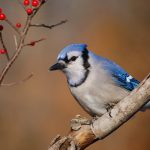It’s winter and if you’re watering the lawn more than once in a 30-day period, you’re creating the perfect conditions for the dreaded lawn fungi.
Did you know that improper winter watering can lead to a lawn filled with fungi and dead grass? In our winters, warm season turf grasses such as Bermuda grass, zoysia and St. Augustine go dormant.
This doesn’t mean there is a complete absence of physiological activity, but rather a period of “hibernation.” For example, no photosynthesis is occurring, but roots still need to be moist for cellular processes and slight growth. For the majority of our winters, natural rainfall accomplishes this task.
Occasionally, in the absence of sufficient rainfall, periodic supplemental watering needs to occur. I recommend using the holiday method to help you determine when to water. I like to use the first day of winter (winter solstice), Martin Luther King Jr. Day and President’s Day.
If you are watering more than once every 30 to 45 days, you’re overwatering. And if you are overwatering, the grass roots will simply die of suffocation. Roots need oxygen to grow and store food. Too much water in the soil pushes out the oxygen. The result: dead grass.
The more likely scenario is that overwatering creates the perfect conditions for lawn fungi. Watering once a week or even twice a month during winter just begs for disease!
So, unless you have a tremendous desire for a spring and summer lawn riddled with dead spots, water only when absolutely necessary — when no rain occurs for 45 days.




